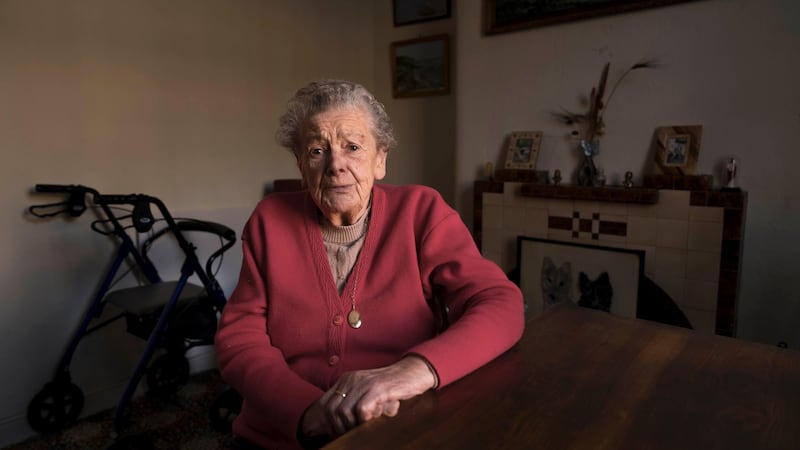There are two ways to look at housing, even during a crisis. The first is as an entirely material investment, the biggest one you’re likely to make, in an asset of fluctuating value within an unpredictable market – in short, a property.
The second is as an essential need, a place to live, something that gathers in history and memories. In Our Lives in Property: Oxmantown Road (RTÉ One, Monday, 9.35pm), an ingenious documentary about the venerable redbrick terrace houses of a street in Stoneybatter, you can appreciate them as both.
With its uncommon access to so many homesteads, the show makes for a skilful biography of buildings, where each house is imprinted with its family’s story, all as unique and distinctive as the décor.
Other viewers, currently making harried weekend trips to inspect the latest additions to an overheated market, may see it as an entire neighbourhood on open viewing. Indeed, for all the warm charm and deep sensitivity of the programme, it doesn’t take a cynic to imagine future Oxmantown listings appearing under the legend “as seen on TV”.
That, however, is not John Downes’s style as director, who achieves a rare intimacy here without ever seeming invasive. The camera glides and floats like a welcome visitor; everyone seems relaxed in its presence, speaking in their kitchens, or strolling the street. It helps that the road is saturated with history – the programme estimates its 200 houses have changed hands thousands of times – and that everyone relates to it personally.
"The new people put their bins against the wall, the old people leave them by the kerb," says Joe Melligan, resident since 1973. "The new people don't wash their step, the old people do. The new people don't leave their clothes on the clothing line – I don't know where they dry their clothes."
The show abounds with similarly revealing details. The figures tell their own story, of course: built to rent at the turn of the last century, the houses were offered to their tenants to buy in 1961 for £800. At the height of the market, a few years ago, they sold for about €490,000.
But worth and value are not always the same thing. In the programme the Stone family, here for generations, reckon with an inheritance from their deceased uncle Shay that is more important than bricks and mortar, finally selling it for €380,000, but never entirely letting go.
Over the years, the character of the neighbourhood has changed distinctly – Conor Pope, of this parish, a resident since 1999, recalls the net curtains replaced by wooden slatted blinds then venetian shutters – and it's telling that we meet residents who work for the coal industry and the tech sector, as though distant ancestors were sharing the same postcode.
Downes includes people born on the street as well as “blow-ins”, renters as well as owners, and the picture that emerges is more like a tapestry than a snapshot.
You see the people who bought at the right time (“I was lucky the crash happened,” admits Sandra Fleming) and a mother, once under threat of homelessness, who thanks her stars her family was accepted under the Housing Assistance Payment scheme. “Unfortunately it comes down to luck,” says Sarah. “I don’t know what the other option is.”

It may also come down to a sense of community; the decency engendered by people living in the same place at the same time. The net curtains – or venetian shutters – of Oxmantown Road may twitch as much as anywhere else, but the stories of its older residents – like 92-year-old Grace Scott, who has called the street home for 88 years and is still renting – mingle easily and comfortably with those of young families.
Indeed, the documentary recognises just how much they have much in common. Everyone here seems right at home.




















